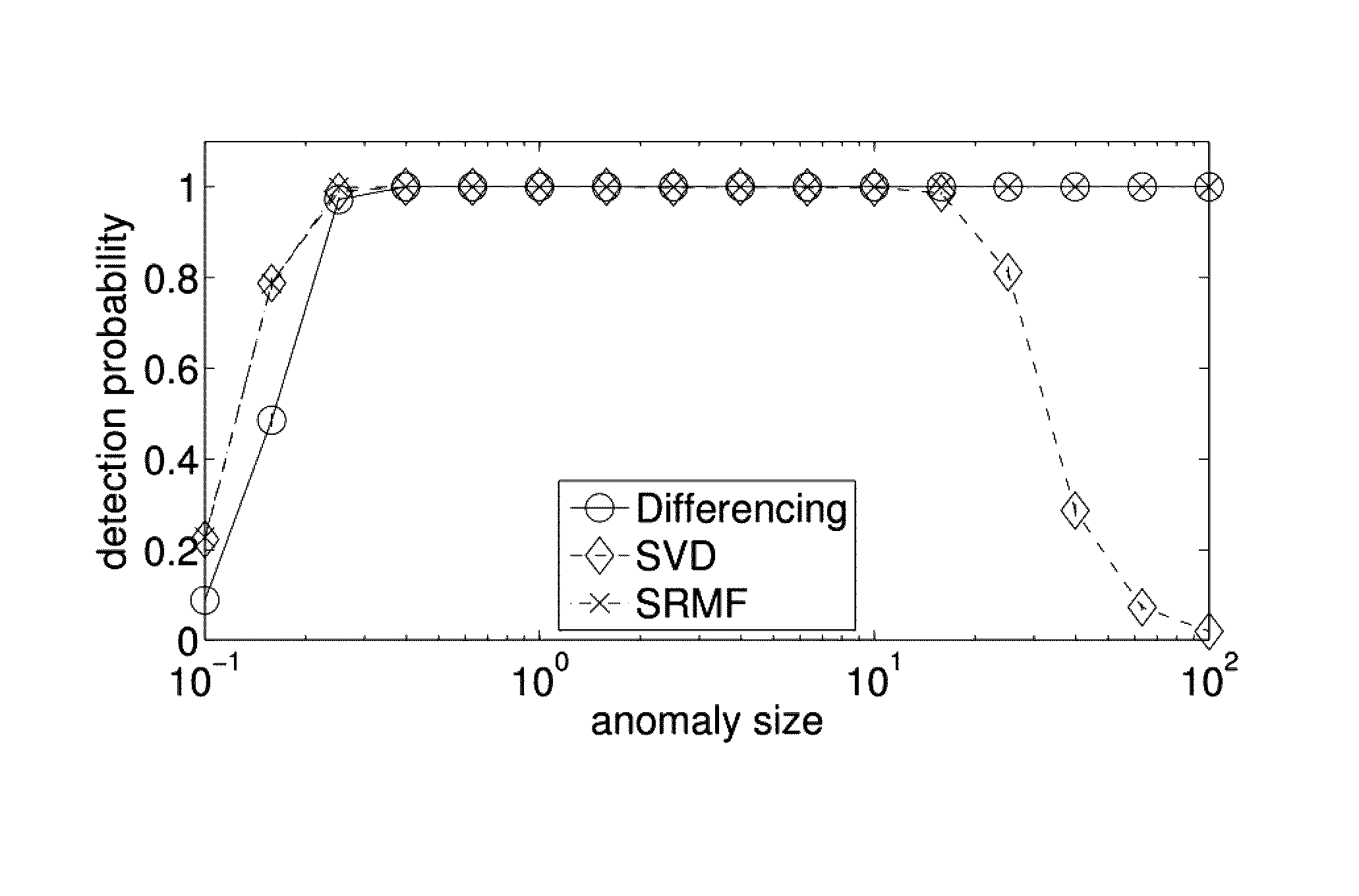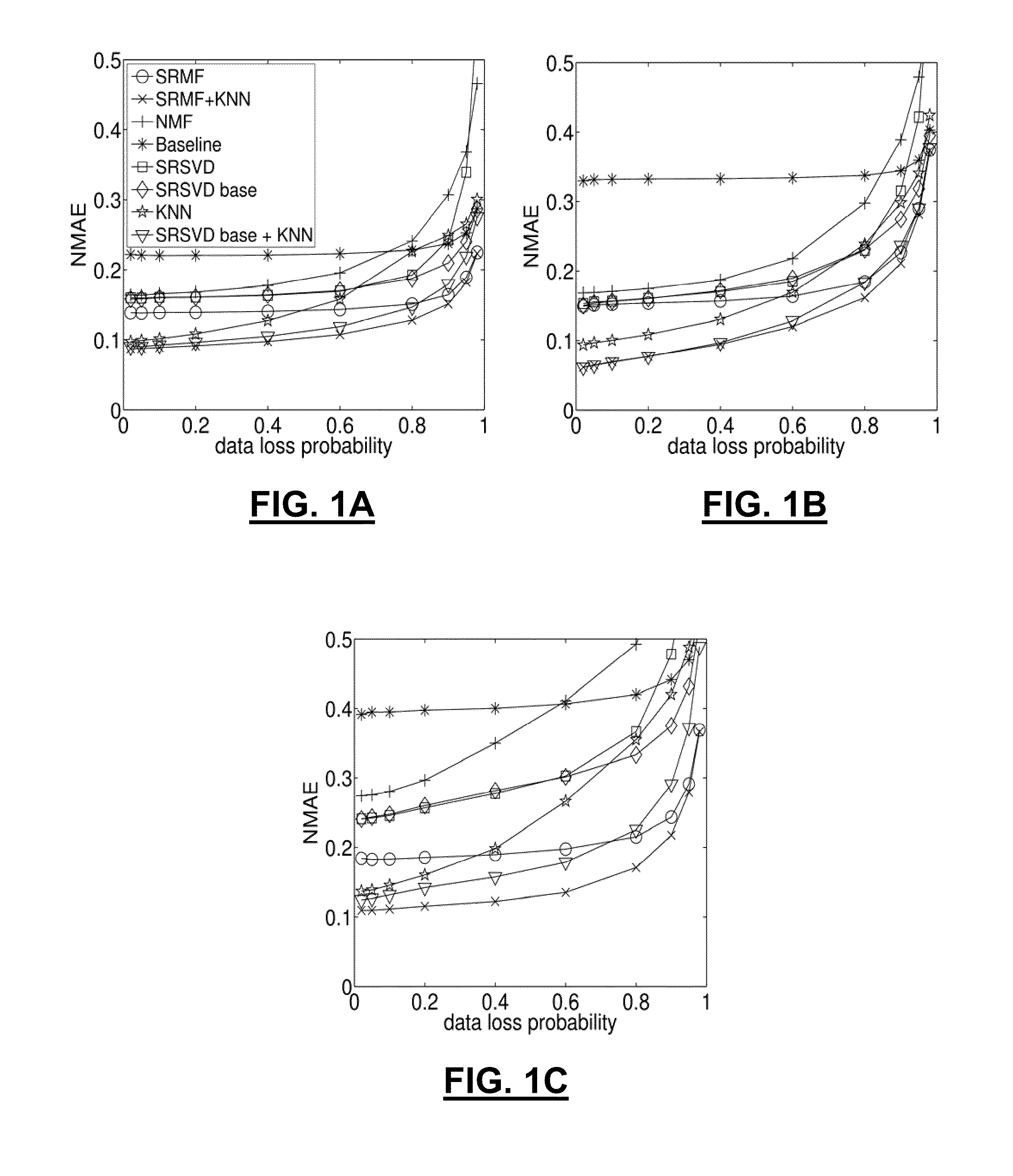Method and apparatus for spatio-temporal compressive sensing
a spatio-temporal compressive sensing and spatio-temporal technology, applied in the field of digital information processing, can solve the problems of not being able to fully, accurately, and accurately measure the data of interest, and existing compressive sensing algorithms often do not perform well for missing value interpolation on real-world data matrices or tensors, etc., to achieve the effect of confirming effectiveness and large datasets
- Summary
- Abstract
- Description
- Claims
- Application Information
AI Technical Summary
Benefits of technology
Problems solved by technology
Method used
Image
Examples
Embodiment Construction
[0025]Embodiments of the present invention now will be described more fully hereinafter with reference to the accompanying drawings, in which some, but not all embodiments of the inventions are shown. Indeed, embodiments of the invention may be embodied in many different forms and should not be construed as limited to the embodiments set forth herein; rather, these embodiments are provided so that this disclosure will satisfy applicable legal requirements. Like numbers refer to like elements throughout.
[0026]The reader of this disclosure is assumed to be familiar with the standard notations of linear algebra, in particular the notions of matrices (i.e., two-dimensional arrays), (column and row) vectors, matrix-vector product, matrix multiplication, and systems of linear equations (See G. H. Golub, C. F. Van Loan, Matrix Computations. Third edition. London: Johns Hopkins University Press (1996)). The required background may be obtained by reading books associated with college courses...
PUM
 Login to View More
Login to View More Abstract
Description
Claims
Application Information
 Login to View More
Login to View More - R&D
- Intellectual Property
- Life Sciences
- Materials
- Tech Scout
- Unparalleled Data Quality
- Higher Quality Content
- 60% Fewer Hallucinations
Browse by: Latest US Patents, China's latest patents, Technical Efficacy Thesaurus, Application Domain, Technology Topic, Popular Technical Reports.
© 2025 PatSnap. All rights reserved.Legal|Privacy policy|Modern Slavery Act Transparency Statement|Sitemap|About US| Contact US: help@patsnap.com



